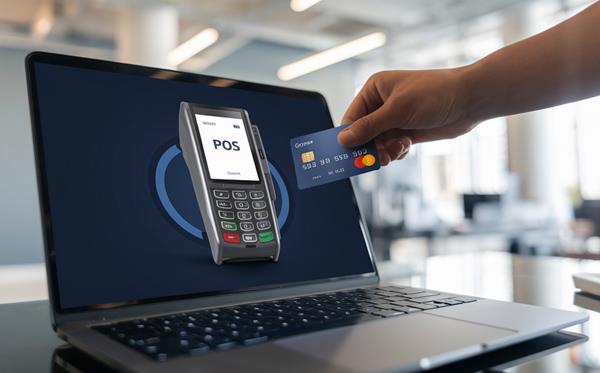The Importance of User Interface in E-commerce

Introduction
In the competitive world of e-commerce, the design and functionality of a website’s user interface (UI) play a crucial role in shaping user experience and driving conversions. A well-designed UI not only attracts users but also ensures smooth navigation, making it easier for customers to find products, complete transactions, and build trust with the brand. Let’s explore why UI is so critical in e-commerce and back it up with relevant statistics and studies.
1. First Impressions and Trust
A user's first interaction with a website heavily influences their perception of the brand. According to a study by Stanford University, 75% of consumers admit that they judge a company’s credibility based on its website design. In the world of e-commerce, credibility translates to trust, which is critical for online purchases.
Furthermore, HubSpot reports that 38% of users will stop engaging with a website if the layout is unattractive or difficult to use. This shows that poor design can lead to lost customers, even before they’ve had the chance to explore your products.
2. Impact on Conversion Rates
Conversion rate is one of the most critical metrics in e-commerce, and the user interface directly impacts it. A clean, intuitive UI can lead to more conversions by guiding users smoothly through the sales funnel.
According to Forrester Research, a well-designed user interface could raise your website’s conversion rate by up to 200%.
Amazon discovered that for every 100 milliseconds of load time improvement, there was a corresponding 1% increase in revenue. This demonstrates that even small UI adjustments related to speed and responsiveness can yield significant results.
3. Mobile Responsiveness
With the growth of mobile shopping, responsive design has become a must-have feature in e-commerce UI. According to Statista, over 72.9% of all e-commerce sales are expected to come from mobile devices by 2024. Therefore, ensuring that the UI is mobile-friendly can directly impact sales and customer satisfaction.
A report from Google reveals that 48% of consumers feel frustrated and distrust companies when websites are not mobile-optimized. On the flip side, 67% of mobile users are more likely to purchase from a website that is mobile-friendly.
4. User Experience and Retention
Good UI design is the foundation of a seamless user experience (UX), which significantly affects customer retention rates. A PwC report found that 73% of consumers say UX is an important factor in their purchasing decisions. If users have a smooth experience navigating your website, they’re more likely to return and become loyal customers.
Moreover, Adobe reports that 39% of users will stop engaging with content if images take too long to load or if the layout is not appealing on mobile devices. Therefore, fast loading times, clear visuals, and easy navigation are essential UI elements that keep users on your site and encourage repeat visits.
5. Simplifying the Checkout Process
One of the biggest reasons for cart abandonment in e-commerce is a complicated or cumbersome checkout process. According to the Baymard Institute, the average cart abandonment rate is around 69.57%. Among the top reasons, 17% of consumers abandon carts due to a complicated or lengthy checkout process, and 21% leave because the website is too slow.
A streamlined, user-friendly checkout interface can significantly reduce cart abandonment rates. BigCommerce reports that simplifying checkout design (e.g., reducing the number of fields) can increase conversions by as much as 35.26%.
6. Improving Accessibility
Designing a UI that is accessible to all users, including those with disabilities, not only broadens your customer base but also improves overall user experience. Accessible websites are legally required in many countries and provide a better experience for a diverse audience.
W3C (World Wide Web Consortium) guidelines suggest that improving accessibility can lead to increased traffic, better SEO performance, and greater customer satisfaction. For instance, users with visual impairments rely on screen readers, and a UI designed with accessibility in mind will ensure that all users, regardless of ability, can navigate and make purchases easily.
7. The Role of Visual Design
Visual hierarchy, color schemes, and the overall aesthetic appeal of a website’s UI also have a profound impact on user engagement. According to a study by ConversionXL, 94% of first impressions are design-related. This means that if your website’s visual design doesn’t appeal to users, they are less likely to trust your brand or explore further.
Moreover, color psychology plays a crucial role in influencing purchasing decisions. Research shows that 85% of shoppers say color is a primary reason they choose to buy a particular product.
8. SEO and Site Performance
A well-optimized UI also plays a role in SEO (Search Engine Optimization). Factors such as mobile responsiveness, load speed, and clean design can affect your site’s ranking on search engines like Google. A faster, more responsive website enhances the user experience, which in turn boosts SEO rankings.
According to Think with Google, sites that load in under 5 seconds see 70% longer average sessions and 35% lower bounce rates. This highlights the importance of UI design in both SEO performance and overall user engagement.
Conclusion
In e-commerce, a well-designed user interface is far more than just an aesthetic consideration—it is fundamental to the overall success of an online business. From enhancing trust and credibility to improving conversion rates and customer retention, a clean, intuitive, and responsive UI can have a significant impact on the bottom line.
Companies that invest in improving their UI not only see better engagement but also higher sales and customer loyalty. In a highly competitive market, ensuring your e-commerce website provides an outstanding user experience is critical to staying ahead.
Sources:
Stanford University – “Web Credibility Research.”
HubSpot – “State of Inbound Marketing Report, 2020.”
Forrester Research – “The Business Impact of Customer Experience.”
Amazon Research on Page Load Time and Conversion.
Statista – "Mobile E-commerce Share 2020-2024."
Google – “Mobile Optimization Insights.”
Baymard Institute – “Cart Abandonment Rate Statistics.”
BigCommerce – “Improving Checkout UX and Conversion Rates.”
Adobe – “Consumer Expectations and Web Performance.”
ConversionXL – “How Visual Design Impacts User Experience.”




































